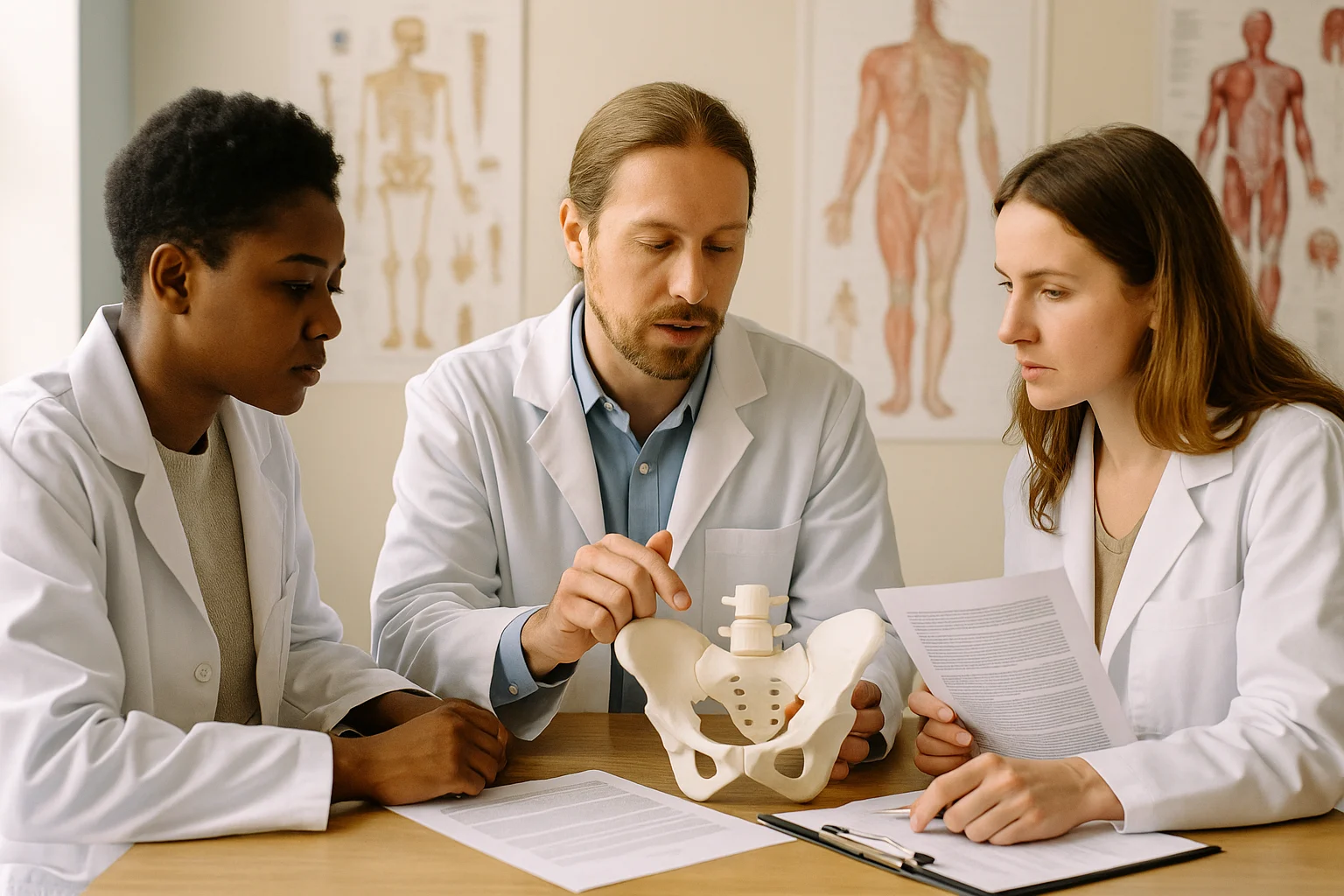From Healer to Clinic CEO
As osteopaths, we’re trained to be expert diagnosticians. We palpate for tissue changes, assess complex biomechanics, and listen deeply to our patients’ stories. We spend years mastering the art of touch and the science of the human body.
But what about the health of our practice?
Most of us became practitioners to help people, not to stare at spreadsheets. We speak the language of anatomy, not analytics. Yet, many talented osteopaths find themselves on a treadmill — busy, but not profitable. Booked, but not growing. Passionate, but nearing burnout.
The problem isn’t a lack of skill. It’s a lack of data.
Whether you’re a solo practitioner or managing a multidisciplinary clinic, you don’t need an MBA to run a successful practice. You just need to track the right vital signs.
By monitoring these five simple metrics each month, you’ll instantly know how healthy your clinic is, where your growth opportunities lie, and what changes will make the biggest impact.
Let’s demystify the numbers that matter most.
1. Patient Retention Rate — The True Measure of Patient Trust
This is your clinic’s pulse. It measures what percentage of new patients trust you enough to return after their initial assessment and treatment.
Formula:
(Number of new patients who returned for a 2nd visit ÷ Total number of new patients in that cohort) × 100
Why it Matters:
Acquiring a new patient is 5 to 25 times more expensive than retaining an existing one. A high retention rate (aim for 70%+) proves patients see your value and results. A low rate, however, signals a leak — somewhere between communication, follow-up, or front-desk experience.
You may be pouring time and money into marketing, only for patients to slip out the back door.
Action Tip:
Don’t just send a generic “check-in.” Automate a message that feels personal, 48–72 hours after their first visit:
“Hi [Name], just checking in to see how you felt the day after your session. Any questions about the exercises we discussed?”
This simple, caring touch can dramatically improve trust — and retention.
2. Pre-Booking Rate — The Engine of Clinical Flow
This measures how many patients book their next appointment before leaving your clinic.
Formula:
(Patients who pre-booked ÷ Total patients seen that week) × 100
Why it Matters:
A strong pre-booking rate (aim for 80%+) keeps your schedule consistent, reduces cancellations, and improves outcomes. It means patients understand that osteopathy isn’t a one-time fix — it’s a process.
Action Tip:
Reframe the “ask.” You’re not selling; you’re guiding. Instead of, “Do you want to book again?”, try:
“Based on today’s findings, your body will respond best if we see you again in 7–10 days. Let’s get that scheduled now so you can stay on track.”
It’s professional, confident, and patient-centered.
3. Average Revenue per Patient Encounter (ARPE) — Your Value Barometer
This tells you what your time is really worth.
Formula:
Total monthly revenue ÷ Total number of patient sessions
Why it Matters:
You can be fully booked and still feel broke. Your ARPE shows whether you’re maximizing value or simply trading time for money. If it’s low, you might be undercharging, over-discounting, or missing opportunities to offer additional services like orthotics or structured treatment programs.
Action Tip:
Before you raise prices, raise perceived value. Send post-assessment reports, create small “recovery pathway” packages, or improve your clinic environment. People pay for clarity and confidence — not just time.
4. Source of Acquisition — Your Marketing GPS
Every new patient came from somewhere — and that “somewhere” holds your growth map.
Why it Matters:
If you don’t know where patients come from, you can’t double down on what’s working. Maybe your Facebook ad brought 2 patients, but Dr. Smith’s referrals brought 8. Which relationship deserves your next coffee meeting? Exactly.
Action Tip:
Add a mandatory “How did you hear about us?” field to your intake form — and go deeper:
“If online, was it Google, Facebook, or our website?”
“If referral, who can we thank for sending you our way?”
It’s not just data collection — it’s relationship building.
5. Marketing ROI — The Profitability Reality Check
This turns your marketing from a guessing game into a measurable investment.
Formula:
(Revenue from new patients from a campaign ÷ Cost of that campaign)
Why it Matters:
If you spent $500 on ads and got 2 patients at $120 each, that’s $240. Not great. But if both patients come back five more times, that $500 ad actually generated $1,200 — a 2.4x ROI. Combine this metric with your retention data, and you’ll instantly know what’s profitable and what’s not.
Action Tip:
Always link your digital ads to a dedicated booking page or use unique offer codes. This lets you track ROI easily — even without complex software.
Bringing It All Together: Your Clinic Dashboard
These five numbers are the vital signs of your business:
| Metric | Reflects Your… |
| Retention Rate | Relationship Health |
| Pre-Booking Rate | Schedule Health |
| ARPE | Financial Health |
| Source Tracking | Community Health |
| Marketing ROI | Growth Health |
You don’t need fancy tools. A simple spreadsheet updated on the first of each month gives you full visibility. When you track consistently, patterns emerge — slow months, high-performing campaigns, referral sources that deserve attention, and moments when it’s time to scale or hire.
Data transforms guesswork into growth.
📈 Final Thought
As osteopaths, we measure progress in posture, mobility, and pain reduction. But if you want your clinic to thrive, you must also measure its health.
Data doesn’t replace intuition — it sharpens it. It gives you clarity, direction, and control. It’s what allows you to go from reactive practitioner to proactive business owner.
Because if you can’t measure it, you can’t improve it.
And every successful clinic runs on two things: exceptional healing and intelligent data.
💡 Ready to Grow?
Want to stop guessing and start building a practice that’s as healthy as your patients?
Visit MarketingNeeds.ca — for done-for-you web design, SEO, and growth systems built specifically for healthcare professionals.








